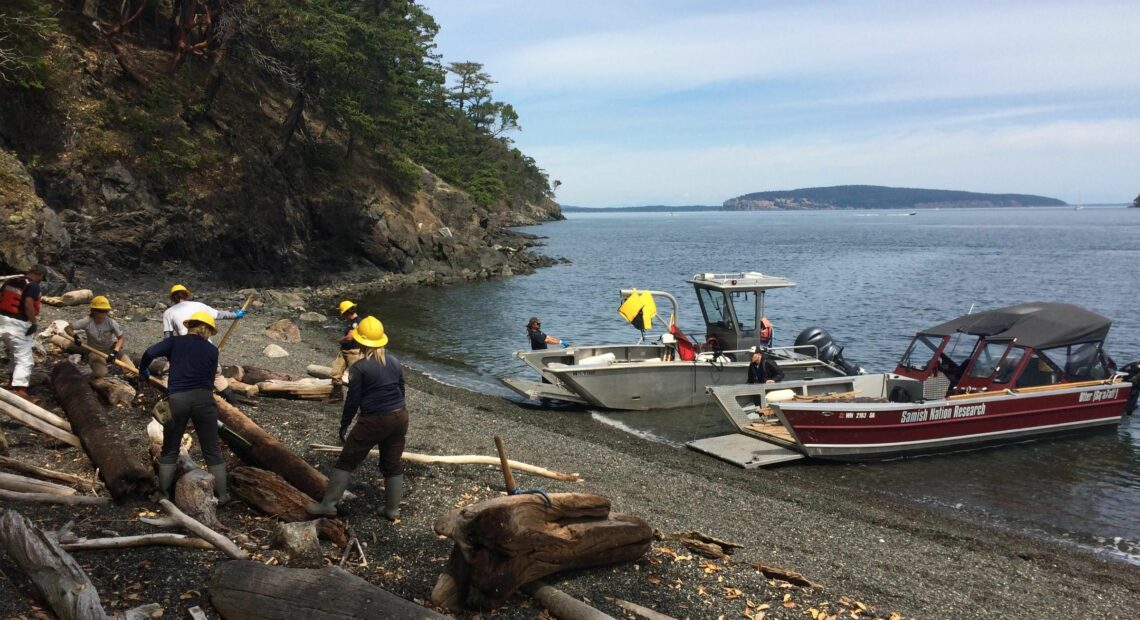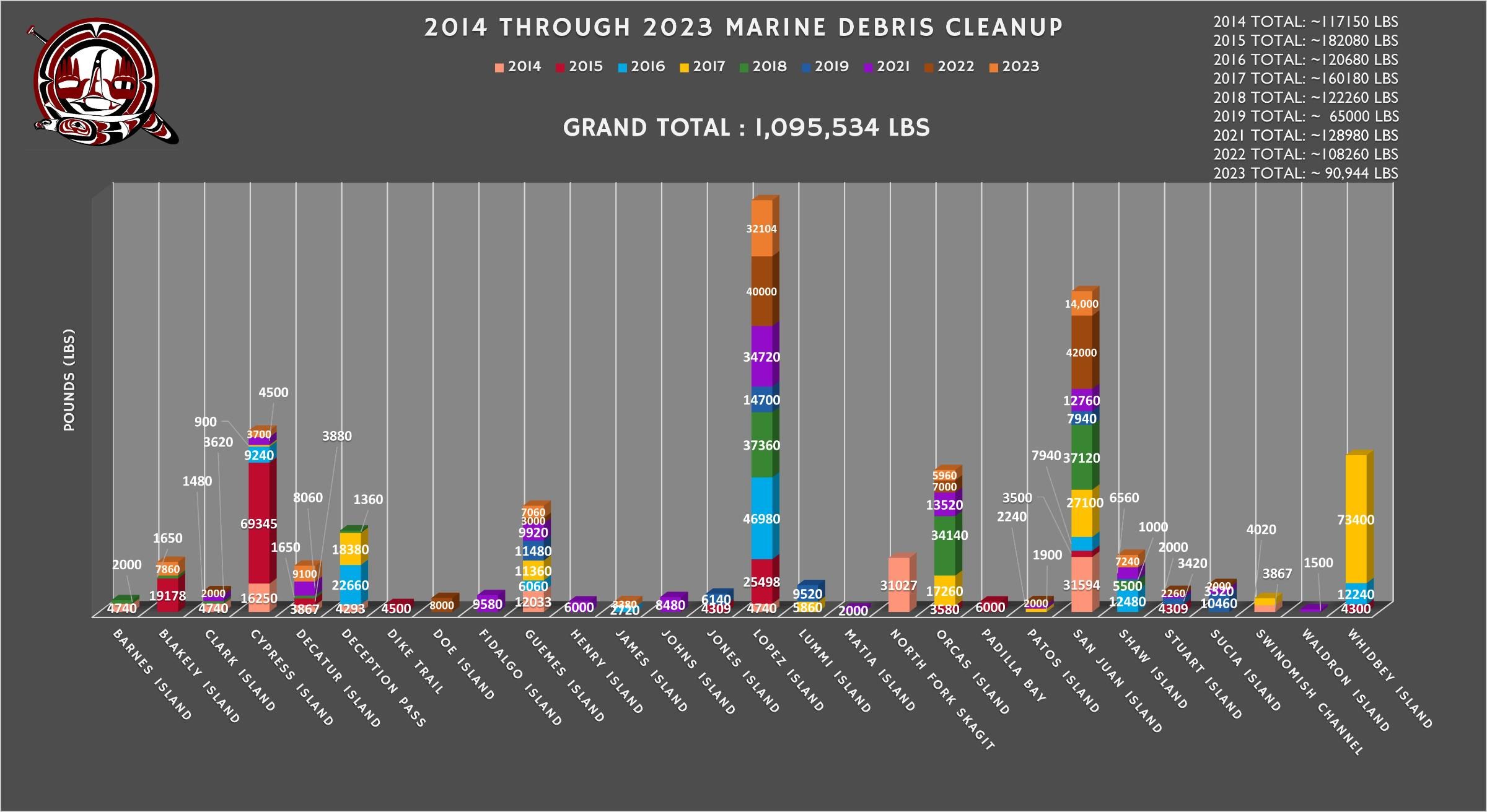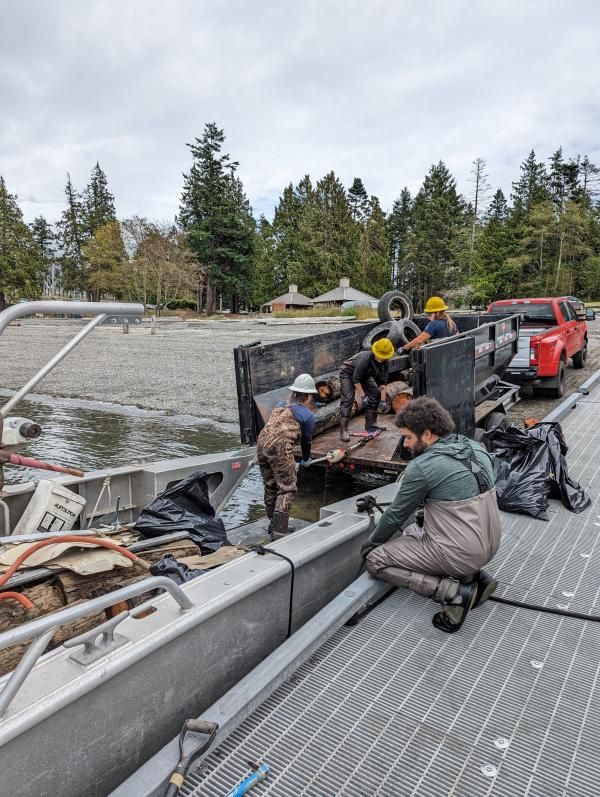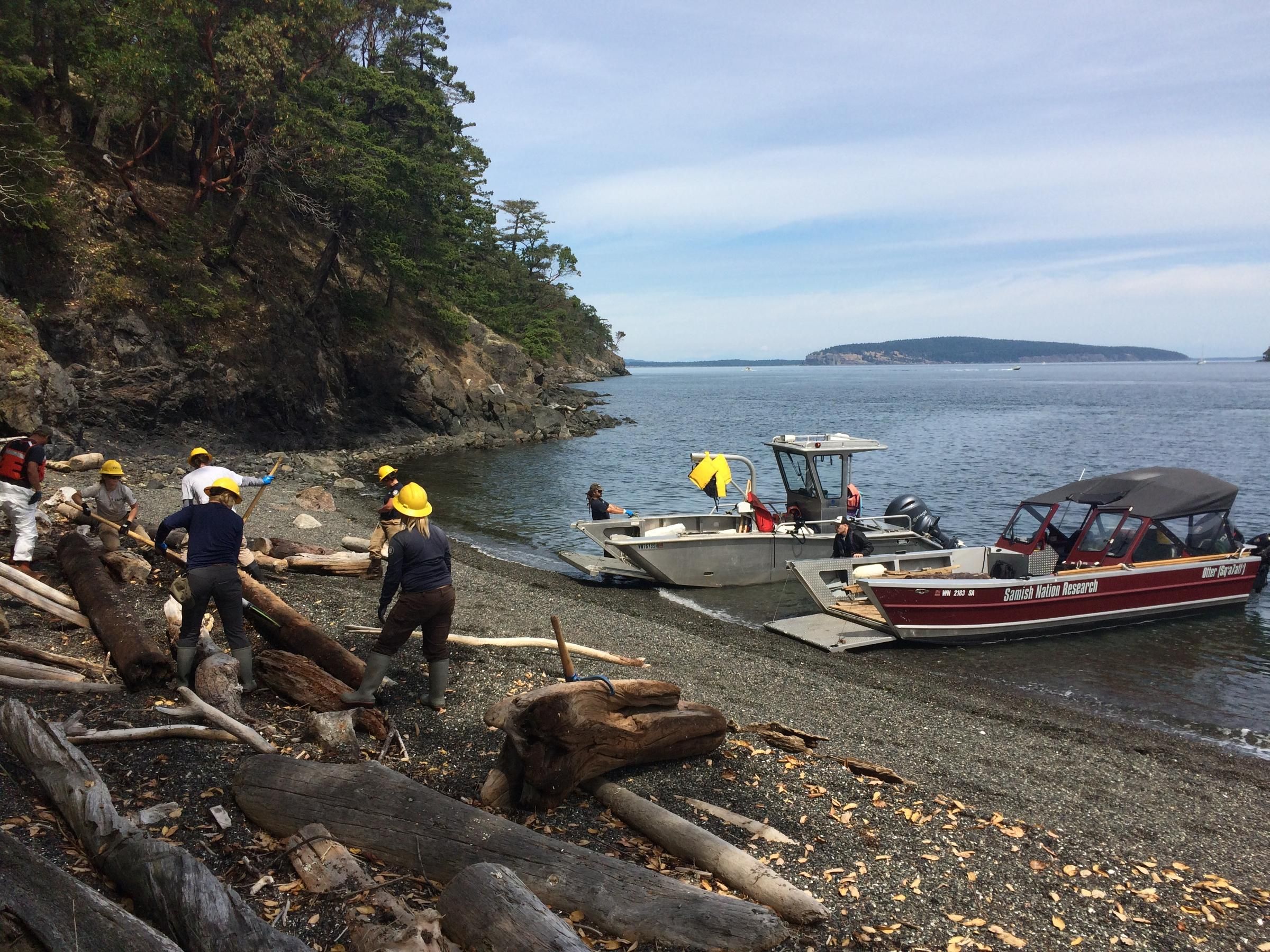
Samish Indian Nation cleans up over a million pounds of marine debris, more to go
Listen
(Runtime 1:08)
Read
It’s that time of year when flowers are blooming, bees are buzzing and crews working for the Samish Indian Nation are scouting shorelines within the San Juan archipelago. They’re looking for marine debris.
“March is usually the starting month,” said Matt Castle, natural resources manager for the Samish Nation. “On nicer days it’s easier to spot the creosote and you’re not bouncing around so much using the binoculars from the boat.”
The Samish Indian Nation’s Department of Natural Resources has been collaborating with the Washington State Department of Natural Resources since 2014 to clean up marine debris from coastlines within their traditional homelands. In the spring, they head out on specialized watercraft that let them idle in shallow water to spot things that shouldn’t be there, such as Styrofoam or old wood pilings coated in creosote.
Before the dangers of creosote were understood, it was ubiquitous in building material. Todd Woodard, with the Samish DNR, explained that since so much of the early industry in this region was built on overwater structures, people used creosote as a wood preservative.
The state DNR is working to remove those legacy creosote pilings. However, it costs a lot of money and time to remove all of the old structures. So, over time, these degrade and eventually fall into water and onto beaches.

A chart showing marine debris clean-up by the Samish Indian Nation from 2014 until now, divided by where the clean-up occurred and represented as pounds of debris. (Credit: Samish Indian Nation Department of Natural Resources)
In partnership with the state DNR, the Samish Nation has removed over a million pounds of marine debris in the past decade and that’s important to the Samish people. If the waste is left there, it can harm first foods like shellfish and salmon, Woodward said.

People load the debris onto a boat to haul it away to a sealed landfill for disposal. (Credit: Samish Indian Nation Department of Natural Resources)
The waste also can harm orcas. The Samish people view the Southern Resident J Pod family as relatives.
“So, really, the work that we’re doing is protecting family and protecting cultural identity,” Woodard said.
A week into spring surveying, crews began scouting the coastlines along Cypress Island near Anacortes. The priority areas for cleanup are often within the San Juan archipelago but that’s a lot of area to cover. An app, MyCoast: Washington, allows the general public to use smartphones to report marine waste that they find. Users can upload a photo that has a GPS tag, so crews know where to find it.
Last summer, Woodard said it made a big difference in their efforts. The more people who know about it, he said, the better. It multiplies the eyes on the beach and helps get the harmful waste out of the water.
To better focus their efforts, crews were working to get a baseline of data to track where debris tends to accumulate.
“The MyCoast app kind of blew that all out of the water because we no longer need to be so systematic. There’s so many different people out surveying for us,” Woodard said.
This summer, crews will go back to areas where the marine waste was spotted to remove it. Then, the waste will go to a sealed landfill so it can’t harm the environment.
















